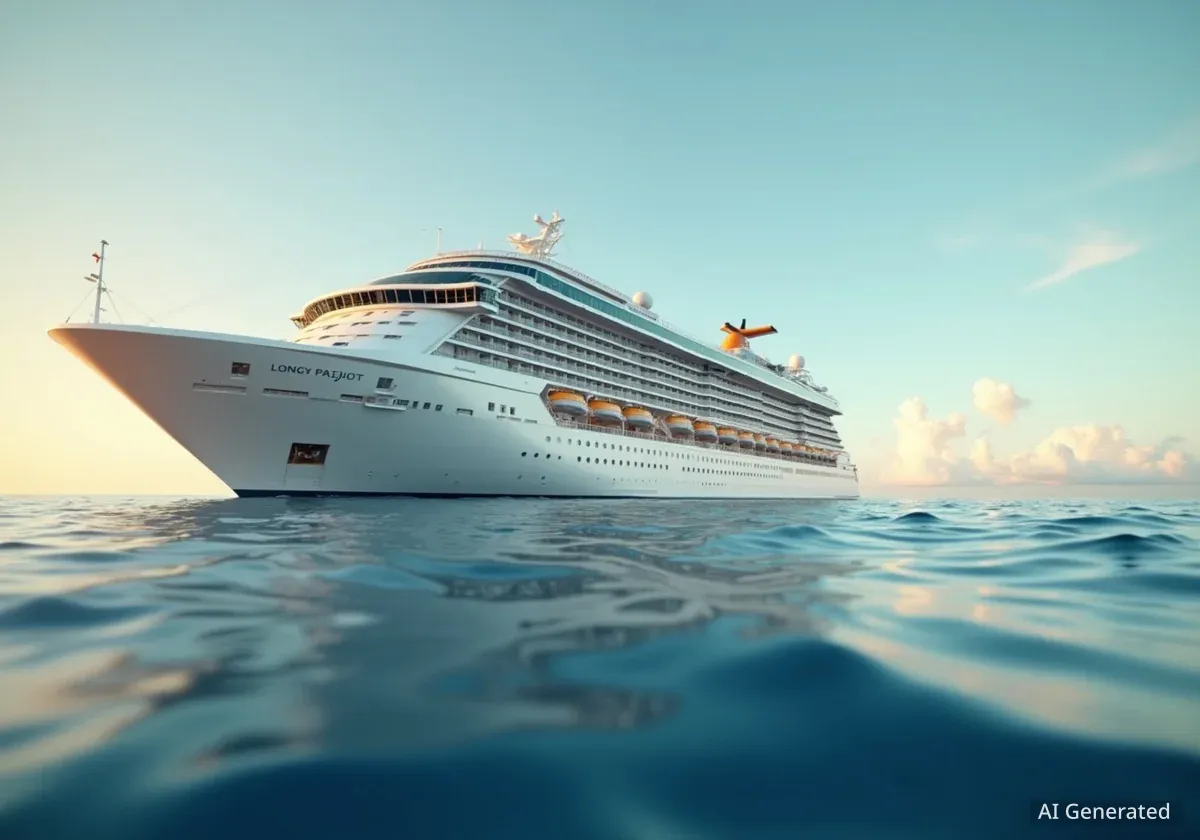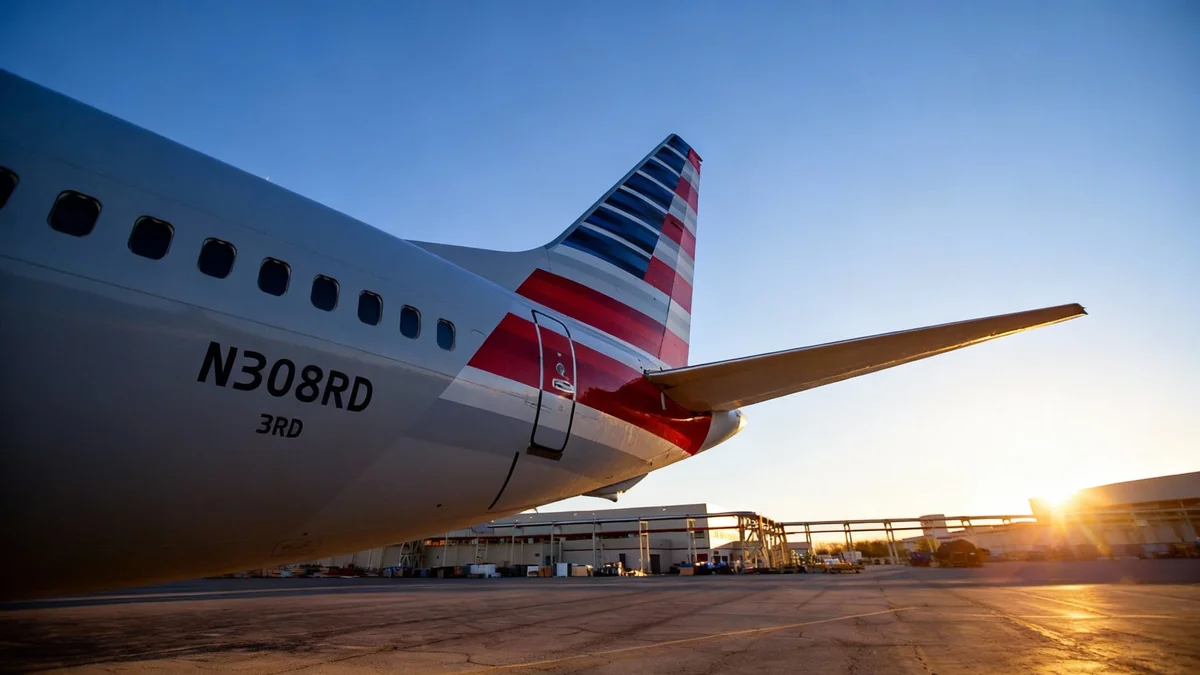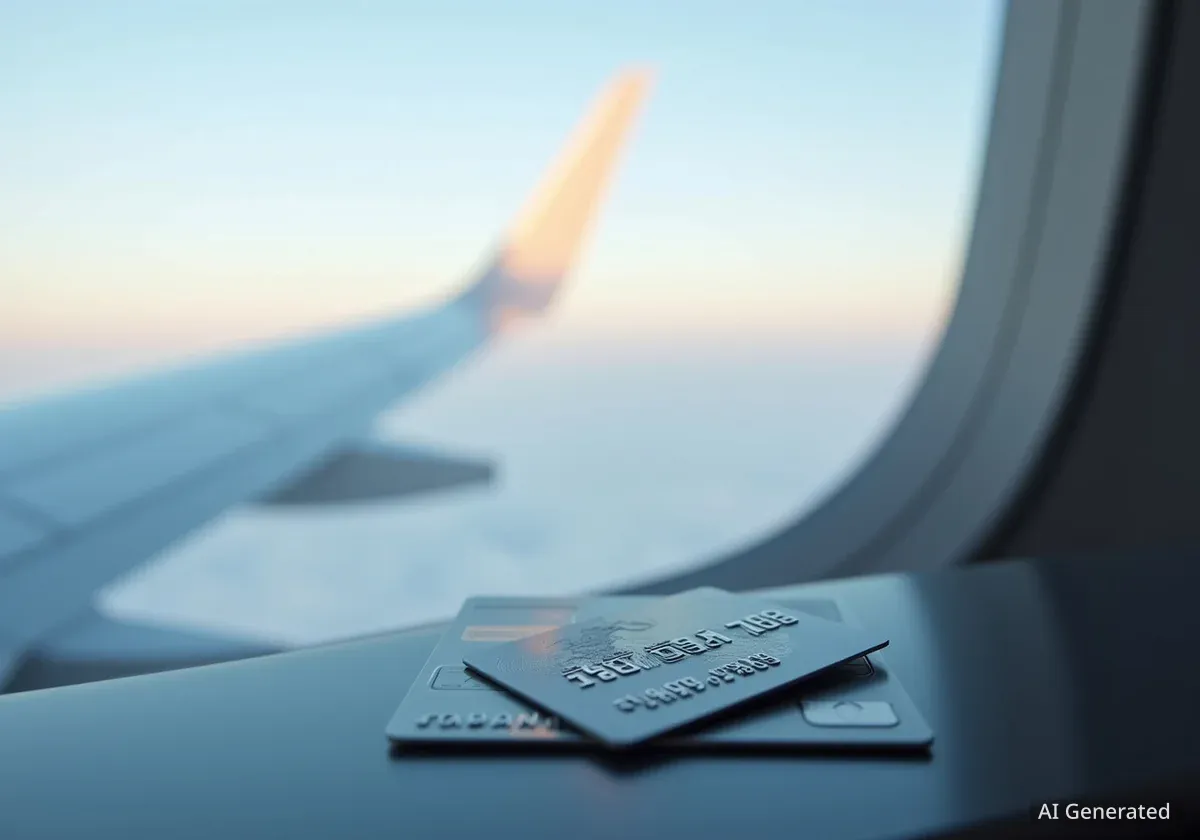Royal Caribbean Cruises Ltd. experienced a significant drop in its share price today after the company's updated profit guidance for the year fell below market expectations. The cruise line operator's shares declined sharply in premarket trading.
Investors reacted negatively to the revised forecast, which, despite being an increase from previous estimates, did not meet the higher bar set by Wall Street analysts. This unexpected dip highlights the sensitive nature of market predictions in the travel industry.
Key Takeaways
- Royal Caribbean shares dropped as much as 12% in premarket trading.
- The company's raised profit forecast of up to $15.63 per share missed analyst expectations of $15.68.
- The stock was down 8% by early morning trading.
- Market reaction indicates investor sensitivity to even slight discrepancies in financial outlooks.
Royal Caribbean's Revised Financial Outlook
Royal Caribbean Cruises Ltd. announced a new profit forecast for the year. The company now expects an adjusted profit of up to $15.63 per share. This figure represents an increase from its earlier projections, reflecting a generally positive trend in the cruise sector.
However, this raised guidance did not satisfy financial analysts. The average expectation among these analysts was slightly higher, at $15.68 per share. This small difference triggered a notable market response.
Key Financial Fact
The difference between Royal Caribbean's raised forecast and analyst expectations was only $0.05 per share, yet it led to a substantial market reaction.
Market Reaction and Share Performance
Following the announcement, Royal Caribbean's shares saw a rapid decline. In premarket trading, the stock slumped by as much as 12%. This immediate drop underscores the volatility often seen in the stock market when companies miss analyst targets, even by a narrow margin.
By 7:55 a.m. UTC, the stock had stabilized slightly but remained down by 8%. This performance indicates that while the initial shock was significant, some recovery occurred as the trading day began.
"Even a small miss on analyst expectations can cause a ripple effect across the market, especially for large companies like Royal Caribbean," one market observer noted. "Investors are always looking for strong signals of growth and exceeding targets."<
- Premarket trading fall: Up to 12%
- Current trading fall (as of 7:55 a.m. UTC): 8%
Industry Context
The cruise industry has shown strong recovery in recent years. Companies like Royal Caribbean have seen increasing demand as travel restrictions eased. This recovery has led to high investor expectations for continued growth and profitability.
Understanding Analyst Expectations
Wall Street analysts play a crucial role in setting market sentiment. They conduct detailed research, analyze company performance, and project future earnings. These projections are then aggregated to form a consensus expectation.
Companies often strive to meet or exceed these consensus figures. When a company's own guidance falls short, even marginally, it can signal to investors that the company's internal outlook is less optimistic than the market's.
Impact of Investor Sentiment
Investor sentiment is a powerful force. It can drive stock prices up or down based on perceptions of a company's future prospects. In this case, the slight discrepancy in the profit forecast was enough to shift sentiment negatively.
This situation highlights how closely investors monitor financial guidance. Any deviation from anticipated performance can lead to a quick re-evaluation of a stock's value.
The Ovation of the Seas cruise ship, one of Royal Caribbean's vessels, is a testament to the scale of the company's operations. Such large assets require consistent revenue streams and strong financial health to operate profitably.
The Broader Cruise Market Landscape
Royal Caribbean is a major player in the global cruise market. Its performance often serves as an indicator for the wider industry. Other cruise lines may also feel the effects of such market movements, even if their own financial reports are not directly impacted.
The sector as a whole has been navigating complex economic conditions. Fuel costs, labor shortages, and geopolitical events can all influence profitability. Companies must continually adapt to these challenges.
Cruise Industry Growth
The cruise industry has been projected to continue its recovery, with passenger volumes expected to surpass pre-pandemic levels in the coming years. This makes investor reactions to slight misses even more pronounced, as high growth is anticipated.
Despite today's share price dip, Royal Caribbean's decision to raise its profit forecast still reflects a positive underlying business trend. The company expects to earn more than it previously thought, which is generally good news for its long-term health.
The market's immediate reaction is often based on short-term comparisons to analyst figures. Long-term investors may look beyond these daily fluctuations and focus on the overall trajectory of the company's financial health and growth strategies.
Looking Ahead for Royal Caribbean
Royal Caribbean will continue to operate its global fleet, serving millions of passengers annually. The company's future performance will depend on various factors, including booking trends, pricing strategies, and operational efficiencies.
Investors will now closely watch the company's next earnings reports and future guidance. These updates will provide further clarity on whether the current market reaction was an overcorrection or a sign of deeper concerns.
The cruise industry remains a competitive space. Companies constantly innovate with new ships, itineraries, and onboard experiences to attract customers. Royal Caribbean's ability to maintain its market position will be key to its sustained success.





